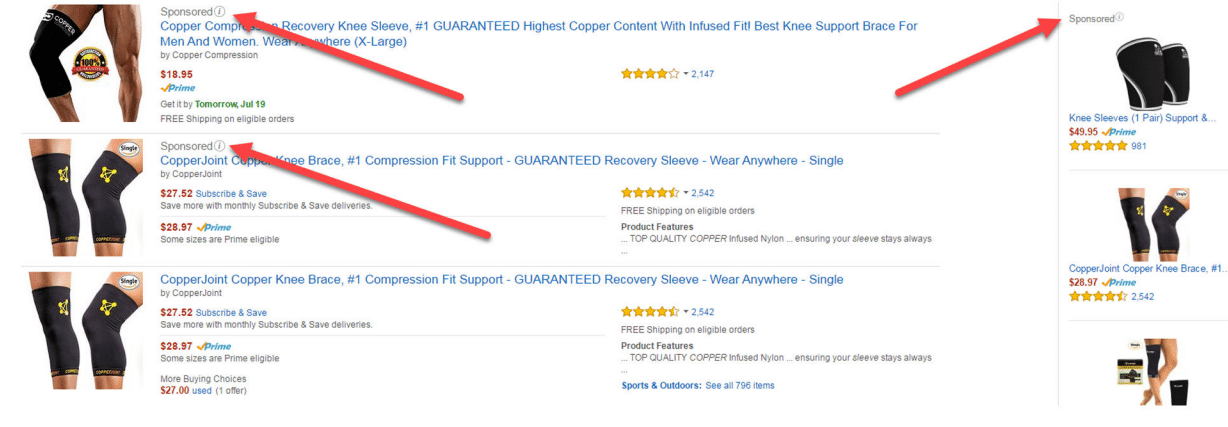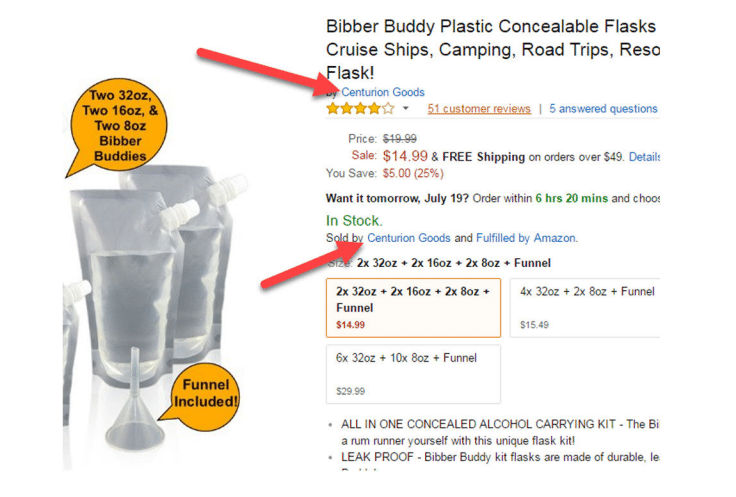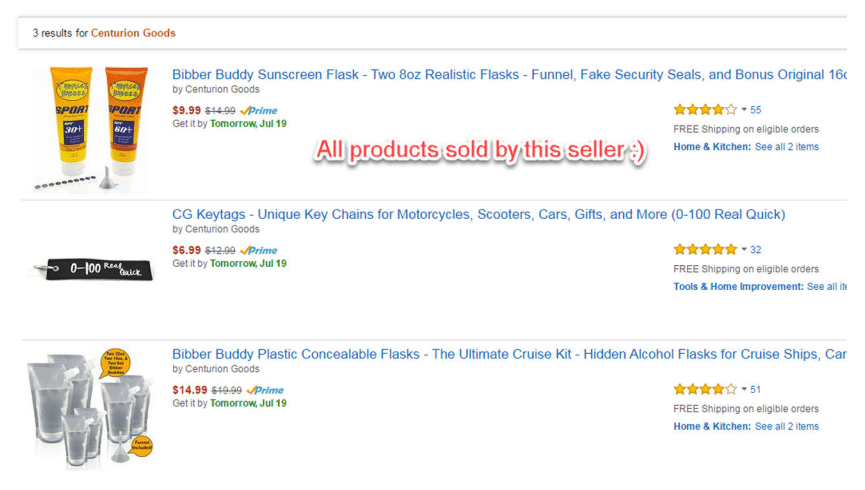In this guide, we’re going through the most effective strategies to find Amazon products in 2019.
Amazon, private label, & eCommerce have been growing faster than anyone predicted.
And with rapid-growth comes rapid-change. So most of what’s being taught out there is just not effective anymore (such as drop shipping).
Today, you’ll learn 3 cutting-edge product research tactics that my clients and I have been using successfully to grow our /ecommerce-workshop”>e-commerce businesses.
Using these methods, we’ve been able to eliminate the stress of researching by only focusing on the hottest private label product opportunities currently set to explode onto the Amazon-scene.
You need to be hyper-focused on only doing what’s most effective, and accept that everything else is a waste of your time.
We challenge you to put these strategies to the test because they’ll help you transform your life & your business.
Table of Contents
What is Amazon Product Research?
Amazon product research is the system you use to find a product to sell on Amazon that has the highest demand with the least amount of competition to make you the most amount of money. Typically it reveals a product that is a few months away from trending in popularity and is early in the product life cycle.
Once you find a product that fits all of the acceptable product research criteria, you have found your winning product. From there you’ve moved on from product research and entered into the sourcing phase of your Amazon business.
Below we’re going to get into the acceptable product research criteria.
The Proper Mindset for Product Research
Most people find product research overwhelming – and what a shame…
Discovering your first product should be exhilarating, not frustrating. It should be one of the most memorable moments of your entire life!
Your first successful product will be the foundation of a new, successful business. One that makes money by improving the lives of its customers.
Your first successful product quickly leads to a successful product line. And that quickly leads to a successful brand…
Unlike many ‘solopreneur’ businesses that you could build today – you’re building a sellable asset. Not just making a quick buck.
You’re building a company that you could easily sell in the future, as many do. You’re building a real business.
And all it takes is one successful product. Everything snowballs from there.
Amazon Product Research Criteria
Here’s what you need to have a successful experience with product research –
What Makes a Good Product vs a Bad Product?
It’s important to know what typically makes a good/bad product stand out.

Good products have the following characteristics…
- Small, light and easy to ship
- Can be sold between $15 and $100
- You can have a 67% profit margin
- Low Best Seller Ranking
- Branding Potential
Avoid researching anything with bad product characteristics like these…
- Patented or trademarked products
- Heavy, bulky and expensive to ship
- Too much competition (more than 200 reviews)
- Electronic products/complex products.
- Perishable products (food)
- Commodity products (sold in Walmart)
The main reason people find product research so challenging is because they don’t know what to focus on.
When you’re just starting out, it’s tough to know what matters and what doesn’t. Because of this, many people fall into an endless abyss – constantly spinning their wheels with no end in sight.
No wonder most people are frustrated!
The solution is to force yourself to stay extremely focused on the metrics that matter…
So here’s the best tool that we recommend.
Amazon Product Research Spreadsheet
At this step, you’ll need to start keeping track of all the different products you want to research. I’ve made my own personal product research spreadsheet available to you for free as part of this guide…I recommend using this spreadsheet to stay organized. It’s incredibly easy to let your product research blow up into an endless task – don’t let it happen to you!
Now let’s get into the fun stuff!
Top 3 ways to do Amazon product research in 2019 (Updated for new Terms of Service)
Research Tactic #1 – Passions, Interests, Hobbies & Problems
Difficulty – 2/5
Effectiveness – 4/5
Time Required – 45-minutes
One of the easiest ways to get started with product research is observing your own day-to-day life.
Here’s 4 areas to think about
- Passions: Things that you love & live for
Exotic foods, travel, productivity - Interests: Things you are interested in & drawn towards
NBA/NFL, Artisan Coffee, Beer Brewing, Politics - Hobbies: Activities you do for fun/leisure
Crossfit, Cooking, Painting, Running - Problems: Pain points you (or others) have throughout the day
“My knee always hurts after sports – I wonder what I can do?”
“I need to improve my posture – I wish my computer screens were raised up higher”
I wish I was a better basketball shooter – maybe there’s a product that can help”
Picking a product within a niche that you already know & love can be a great competitive advantage. If you’re an avid skydiver, you’ll probably see many opportunities that others can’t (in both your product selection & your marketing).
You’ll typically be able to acquire customers more efficiently than competitors in industries you already know & love – since you’re tapped into the subconscious behavior of your target customer.
High-margin products are usually found in these areas. When our purchases are driven by passions, interests, hobbies, or problems – we tend to throw price sensitivity to the wind…
For example – when most people buy a pair of headphones, they tend to buy a decent-looking low-cost pair. However, an audiophile who is obsessed with the quality of his music will happily pay hundreds of dollars more. They would be unhappy to pay anything less. Simply because they are passionate about it.
To actually execute this strategy, I recommend carrying around this Brainstorm Worksheet for 2-3 days while brainstorming different product ideas. Once your worksheet is full, then research your best ideas using the Product Research Workbook.
If you’re still lost, here’s an example Brainstorm Worksheet that I filled out 🙂 (No opt-in required)
https://s3.amazonaws.com/startupbros/products/brainstorm_guide.pdf
https://s3.amazonaws.com/startupbros/products/brainstorm_products_example.pdf
Research Tactic #2 – Spy On The Competition
Difficulty – 1/5
Effectiveness – 2/5
Time Required – 15-minutes
This is a controversial strategy that I would only recommend using for inspiration purposes. It’s working well for people right now, so it’s in this ebook.
This strategy will allow you to spy on your competition, and see exactly which products they are launching right now. However – you should be very reluctant to copy somebody else’s product.
There’s a few reasons you should not blindly copy another seller’s product –
- You will always be 6-12 months behind the competition, constantly trying to catch up.
- Or never know which products are successful, and what makes them successful.
- And you’ll be a dick.
With that being said, here’s how you can see what the competition is selling…
Method 1 – Spying on Competitor’s PPC Campaigns
You can see which products are successful right now by checking out what other sellers are advertising via Amazon PPC.
If a seller is advertising a product, you can be sure that they’re making money with it! In fact, since advertising costs money – any product being sold via PPC Ads tend to have very lucrative profit margins. (To support the additional costs of ad spend).
Here’s how you can see what other sellers are promoting via Amazon PPC…
Any time you see the word “Sponsored” on Amazon, it means the product is being advertised by the seller via PPC.
You’ll usually find Sponsored Products either on the ‘Search Results’ pages:

Method 2 – Spying on Competitor’s Catalogs
To see another seller’s product catalog, just click their Seller Display Name from any product listing.

Now we can see this seller’s entire product catalog…

When using this strategy, the fewer times the better. You want to target smaller sellers who you can compete with. Not large companies that only make money when they sell thousands of units. You want to make money on every sale.
Method 3 – Spying on Giveaway/Review Clubs
This is a strategy that will only work for those of you ready to invest in your product launches.
If you’ve already been selling on Amazon for a while, you’re probably familiar with giveaway/review clubs. These are essentially product review/feedback communities where you can give away heavily discounted product for honest feedback.
Most of these clubs don’t even require a login. You can simply head to the website and see which products are being launched.
**As of 2019 review sites have pretty much been shut down. You can’t give away free products for product reviews. However you can sell heavily discounted products with expecting anything in return. We have a few favorites that we turn to given this Amazon update.
Snagshout, Tomoson, and Amz.one
Research Tactic #3 – Ask Your Current Suppliers
Difficulty – 1/5
Effectiveness – 5/5
Time Required – 10-minutes
If you already have a successful Amazon product (or when you do), this could be the most effective product discovery tactic you’ll ever find…
Asking your current suppliers about their hottest & fastest moving products will give you great ideas – but that’s not what makes this strategy so effective.
The reason this works is economies of scale – something you’ll become extremely familiar with as your company continues to grow. Simply put, the more product you buy from any given source, the lower your per-unit cost will be…
I know you’re saying ‘duh’, but few people realize that ordering multiple products from the same supplier will drive the cost-per-unit down on all your products.
This means you can achieve bulk-pricing discounts without depending on any single product. And it means you can develop a competitive pricing advantage others can’t match.
And that’s pretty awesome 🙂
Picking Amazon Product Research Tools
Besides these 3 tactics we shared with you here, there are Amazon research tools you can use to find products.
It’s not something we’re going to cover in the post because we cover this topic extensively in other posts. We have articles that walk you through each tool and help you figure out what to sell.
When picking a product research tool, the best one is the one you’re most comfortable using.
So if we had a top 3 that we love is these.
- Viral Launch (Paid)
- Jungle Scout (Paid)
- Helium 10 (Paid)
Each one of these tools can get you started and help you launch your first product in a weekend. Please check out the next chapter of this article: Step by Step Guide to Find a Profitable Product to Sell.
Wrapping This Up…
Sometimes the best product research tactic is the one that gets you to take action.
We’ve been doing this since 2012 and can promise you that we’ve been where you are. We’ve taken over 6,000 people through our Amazon course and past the initial stages of fear.
So once you decide on a niche you want to explore, take off!
One year from now you will look back and understand what a big moment today was. It was the day you decided to start.
Remember that you’re not alone in all of this. Comment below if you need any help at all or email us bros@startupbros(dot)com.
We’re always answering emails and we want to hear from you always. These tactics have worked for us and we’re always updating the way we do things so check back often!
Once you’ve brainstormed all of your passions, hobbies, interests, and problems the next step is to actually use tools to find products.
Move on to Step 2: Step by Step Guide to Find a Profitable Product to Sell.
See you there!
Additional resources you might be interested in:
- Easily Purchase UPC Codes for Amazon
- 21 Chrome Extensions for FBA Sellers
- How Does Merch by Amazon Work: The Complete Guide
Special Offer…
New product research techniques and finding products that are not saturated are covered in our completely updated and brand new Amazon business course that teaches first time entrepreneurs how to launch their very own physical product Amazon business. If you want to check that out and see if it’s right for you click here…
